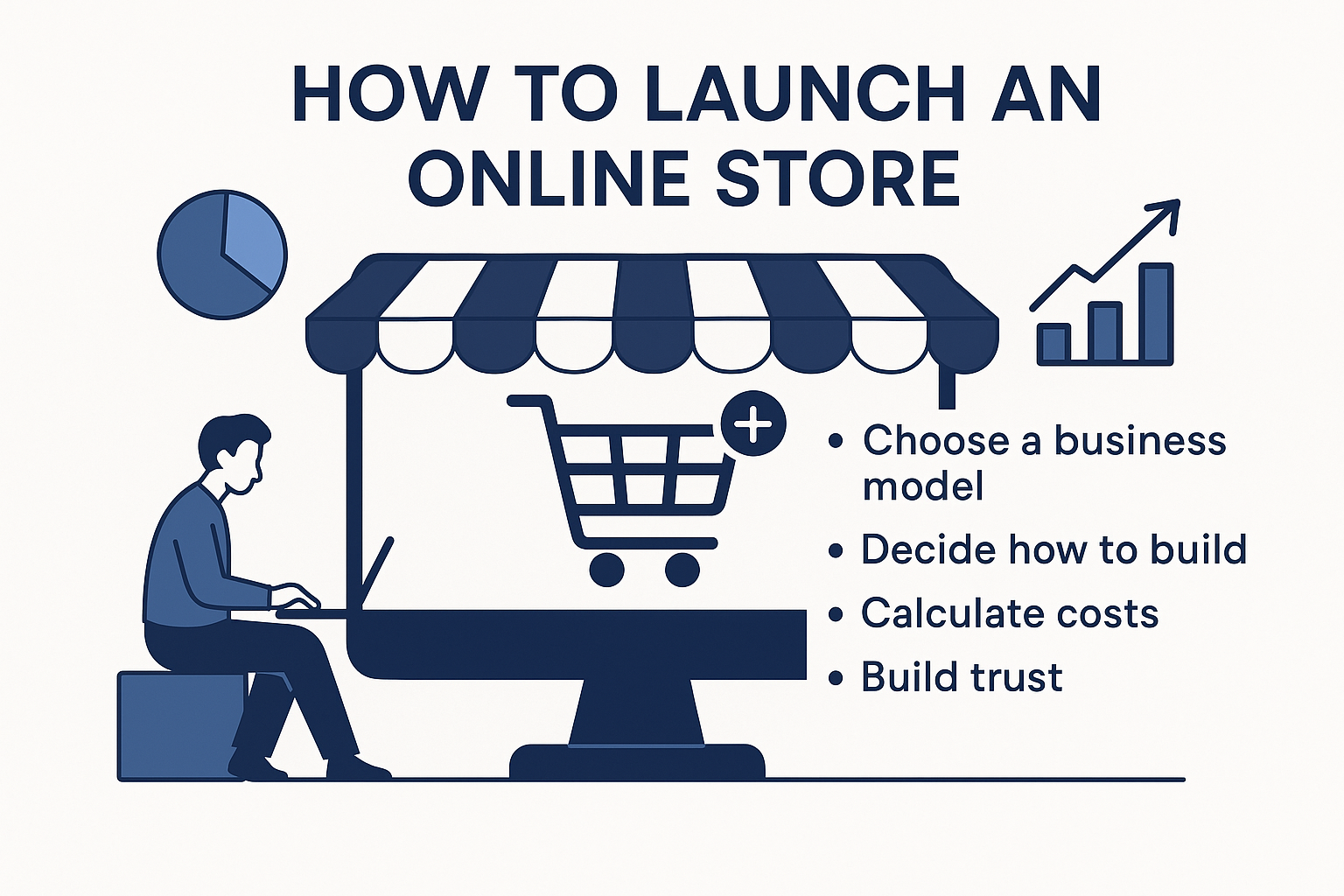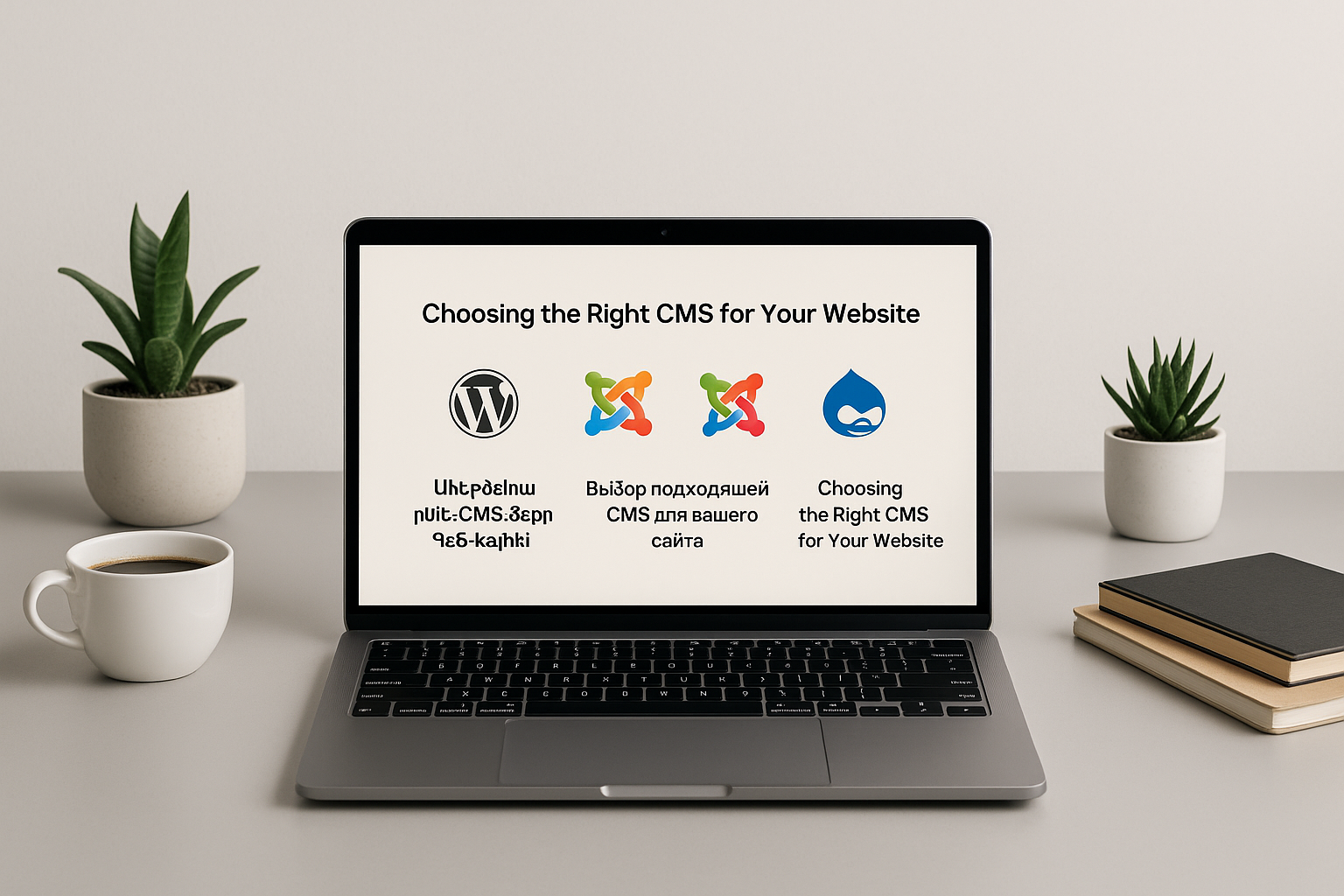Blog
How to Launch an Online Store: A Step-by-Step Guide

Opening an online store can seem like a daunting task, but with the right planning and approach, it can be one of the most rewarding business decisions you’ll ever make. From choosing the right business model to handling tax issues and customer trust, this article will walk you through the essential steps to create your own online store.
1. Choosing the Right Business Model for Your Online Store
Before diving into the development of your online store, it’s crucial to decide on your business model. Here are the most common models:
-
Selling Your Own Products: This is the simplest model where you sell products you manufacture or source yourself. You may already have a physical store and want to expand into e-commerce to increase sales and reach more customers.
-
Dropshipping: This model involves selling products from suppliers who handle the inventory and shipping. You don’t hold stock yourself, and you make money by marking up the product price.
-
Marketplace: A marketplace lets different sellers showcase their products on your platform. You act as an intermediary, providing the infrastructure and tools for sellers to run their shops while handling payments and customer service.
2. Where to Start: Your Options for Building an Online Store
Once you've decided on your business model, you need to choose how to build your store. Here are three main options:
-
Ready-Made Templates: Buying a template is the most affordable option, but it limits your flexibility. It’s suitable for small stores, but templates may pose security risks and limit functionality.
-
Renting a Store: You can rent an online store platform to start your business without long-term commitments. It's a good option for testing your business idea before investing heavily.
-
Building from Scratch: This is the most expensive but also the most customizable option. By creating your store from the ground up, you have complete control over its functionality, design, and scalability. If you're serious about your business, this is the way to go.
3. Costs Involved in Developing an Online Store
Planning your budget is essential. Development costs can vary greatly depending on your approach. Here are the main categories of expenses:
-
Design and Development: Custom websites from scratch will incur higher initial costs, but they offer long-term benefits like scalability and security.
-
Marketing and Promotion: To attract customers to your site, you’ll need to budget for SEO, social media marketing, and paid advertising.
-
Ongoing Maintenance: Regular updates, security patches, and improvements will incur ongoing costs.
-
Platform Fees: If you’re using a third-party platform, there will likely be monthly or transaction fees.
It's important to budget wisely and always prepare for additional costs. The cost of launching an online store can vary, but it's important not to cut corners on key aspects like security and user experience.
4. Ensuring Trust and Building Reputation
Trust is a critical factor for online shoppers. To build credibility and trust, consider the following:
-
SSL Certificates: Ensure your site is secure by using an SSL certificate. This protects your customers' data and helps improve your search engine ranking.
-
Customer Reviews: Allow customers to leave feedback. Positive reviews increase trust and help potential buyers make decisions.
-
Professional Design: A sleek, user-friendly design will make customers feel more comfortable navigating your site.
5. Tax Issues and Legal Considerations
Before launching your online store, make sure you address tax and legal matters:
-
Register Your Business: Ensure your business is legally registered and complies with local laws.
-
Sales Tax: Understand how sales tax applies to your online store, depending on where your customers are located.
-
Privacy Policies: You must have clear privacy policies and terms of service, especially if you handle sensitive customer data.





